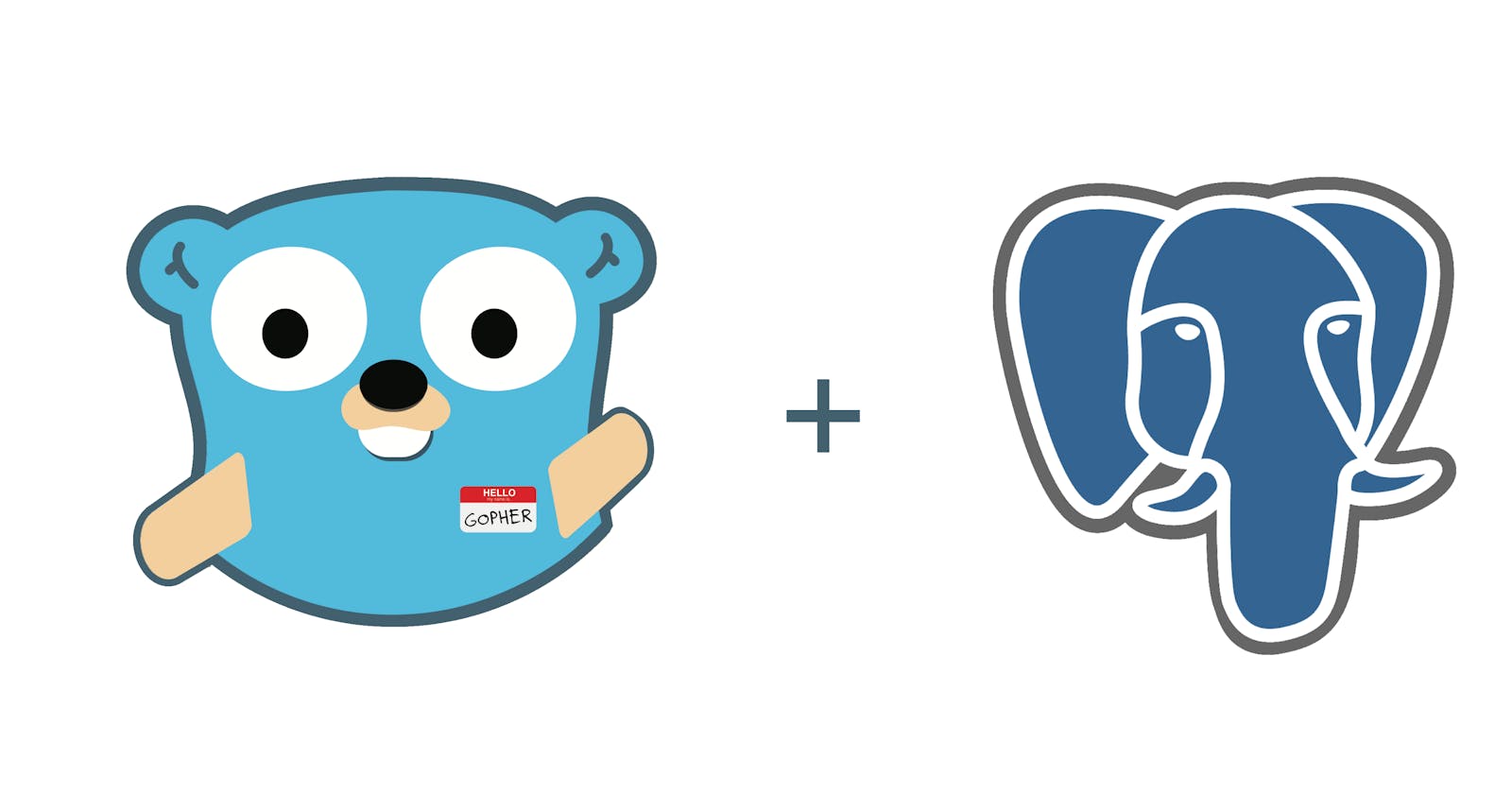Introduction
If you’re a modern web developer, it is inevitable to ignore a database for long as it plays an important part in the application.
So in this post, I’ll be demonstrating how we can connect to a PostgreSQL database and perform basic SQL statements using Go.
Prerequisites
You'll need Go version 1.16+ and PostgreSQL installed on your development machine.
In order to connect with PostgreSQL we need driver, So we'll use pgx as our driver.
Code time 🚀
Code v0.1 🌎
Aim
Let's Start with a simple "Hello World.!" code.
Let’s create a new main.go file. Within this, we’ll import a few packages and set up a simple connection to an already running local database. for this tutorial, I'm using postgres as username, 123 as password, localhost network address, :5432 default port, and test database.
You can change according to your setup.
postgresql://[user[:password]@][netloc][:port][/dbname][?param1=value1&...]
Now open main.go and write the following code.
package main
import (
"context"
"fmt"
"github.com/jackc/pgx/v4"
)
func main() {
// Open up our database connection.
conn, _ := pgx.Connect(context.Background(),
"postgres://postgres:123@localhost:5432/test")
// defer the close till after the main function has finished
// executing
defer conn.Close(context.Background())
var greeting string
//
conn.QueryRow(context.Background(), "select 'Hello, world!'").Scan(&greeting)
fmt.Println(greeting)
}
pgx.Connec() establishes a connection with a PostgreSQL server with a connection string, this will return pgx.Conn is a PostgreSQL connection handle.
conn.QueryRow() executes sql query on the database, After that we store the response of data using .Scan()
Code v1.0
So, now that we’ve successfully created a connection and build hello world with the database. Now let's start with a table and perform some queries over it.
Aim
Now we build a program where we can insert and fetch user data. We will understand various functions in the pgx package.
Creating Table into PostgreSQL
CREATE TABLE IF NOT EXISTS USERS(
ID SERIAL PRIMARY KEY,
USERNAME VARCHAR(20) NOT NULL UNIQUE
);
Table name is Users with ID and USERNAME columns.
Creating user struct
// User is the model present in the database
type User struct {
ID int `json:"id"`
UserName string `json:"username"`
}
Inserting User into database
So if we want to store a user into the database.
//Creating temporary user object.
tmpUser := User{UserName: "Captain K"}
//Calling InsertUser Method
InsertUser(&tmpUser, conn)
func InsertUser(u *User, conn *pgx.Conn) {
// Executing SQL query for insertion
if _, err := conn.Exec(context.Background(), "INSERT INTO USERS(USERNAME) VALUES($1)", u.UserName); err != nil {
// Handling error, if occur
fmt.Println("Unable to insert due to: ", err)
return
}
fmt.Println("Insertion Succesfull")
}
Querying Multiple Rows
When we want to read all the users stored in the database.
func GetAllUsers(conn *pgx.Conn) {
// Execute the query
if rows, err := conn.Query(context.Background(), "SELECT * FROM USERS"); err != nil {
fmt.Println("Unable to insert due to: ", err)
return
} else {
// carefully deferring Queries closing
defer rows.Close()
// Using tmp variable for reading
var tmp User
// Next prepares the next row for reading.
for rows.Next() {
// Scan reads the values from the current row into tmp
rows.Scan(&tmp.ID, &tmp.UserName)
fmt.Printf("%+v\n", tmp)
}
if rows.Err() != nil {
// if any error occurred while reading rows.
fmt.Println("Error will reading user table: ", err)
return
}
}
}
Querying a Single Row
Find a user using user's ID.
func GetAnUser(id int, conn *pgx.Conn) {
// variable to store username
var username string
// Executing query for single row
if err := conn.QueryRow(context.Background(), "SELECT USERNAME WHERE ID=$1", id).Scan(&username); err != nil {
fmt.Println("Error occur while finding user: ", err)
return
}
fmt.Printf("User with id=%v is %v\n", id, username)
}
Conclusion 🎉
In this post, we managed to set up a connection to a PostgreSQL and then perform some simple queries to that database and marshal the returned responses into a struct. This should hopefully give you everything you need in order to take things further and build your own Go applications on top of PostgreSQL.
- When to use db.Exec or db.Query ?
- We can use pgx and pgxpool interchangeably but pgxpool is a concurrency-safe connection pool for pgx. It is not safe for concurrent usage. Using a connection pool to manage access to multiple database connections from multiple goroutines.

